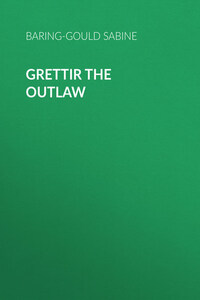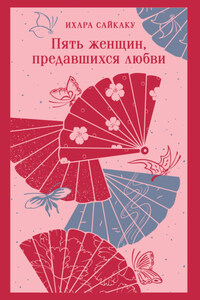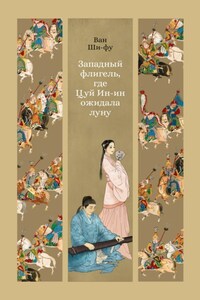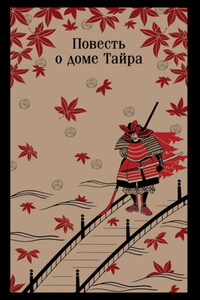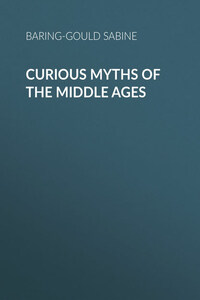The Birthplace of Grettir – The Peopling of Iceland – A History of Quarrels – Stories Round the Hearth – Biarg – The Great Blue Bay – The Boy Grettir – The Saga of Onund Treefoot – The Northern Pirates – The Fight with King Harald – Onund's Wound – After the Battle
It was night – drawing on to midnight – in summer, that I who write this book arrived at the little lonely farm of Biarg, on the Middle River, in the north of Iceland. It was night, near on midnight, and yet I could hardly call it night, for the sky overhead was full of light of the clearest amethyst, and every stock and stone was distinctly visible. Across the valley rose a rugged moor, and above its shoulder a snow-clad mountain, turned to rosy gold by the night sun. As I stood there watching the mist form on the cold river in the vale below, all at once I heard a strange sound like horns blowing far away in the sky, and looking up, I saw a train of swans flying from west to east, bathed in sunlight, their wings of silver, and their feathers as gold.
I had come all the way from England to see Biarg, for there was born, about the year A.D. 997, a man called Grettir, whose history I had read, and which interested me so much that I was resolved to see his native home, and the principal scenes where his stormy life was passed.
The landscape was the same as that on which Grettir's childish eyes had looked more than eight hundred and fifty years ago. The same outline of dreary moor, the same snowy ridge of mountain standing above it, catching the midnight summer sun, the same mist forming over the river; but the house was altogether different. Now there stood only a poor heap of farm-buildings, erected of turf and wood, where had once been a noble hall of wood, with carved gable-ends, surrounded by many out-houses.
Before we begin on the story of Grettir, it will be well to say a few words about its claim to be history.
Iceland never was, and it is not now, a much-peopled island. The farmhouses are for the most part far apart, and the farms are of very considerable extent, because, owing to the severity of the climate, very little pasturage is obtained over a wide extent of country for the sheep and cattle. The population lives round the coast, on the fiords or creeks of the sea, or on the rivers that flow into these fiords. The centre of the island is occupied by a vast waste of ice-covered mountain, and desert black as ink strewn with volcanic ash and sand, or else with a region of erupted lava that is impassable, because in cooling it has exploded, and forms a country of bristling spikes and gulfs and sharp edges, very much like the wreck of a huge ginger-beer bottle factory.
What are now farmhouses were the halls and mansions of families of noble descent. Indeed, the original settlers in Iceland were the nobles of Norway who left their native land to avoid the tyranny of Harold Fairhair, who tried to crush their power so as to make himself a despotic king in the land.
These Norse nobles came in their boats to Iceland, bringing with them their wives, children, their thralls or slaves, and their cattle; and they settled all round the coast. The present Icelanders are descended from these first colonists.
Now, the history of Iceland for a few hundred years consists of nothing but the history of the quarrels of these great families. Iceland was without any political organization, but it had an elected lawman or judge, and every year the heads of the families rode to Thingvalla, a plain in the south-west, where they brought their complaints, carried on their lawsuits, and had them settled by the judge. There was no army, no navy, no government in Iceland for a long time; also no foreign wars, and no internal revolutions.
These noble families settled in the valleys and upon the fiords thought a good deal of themselves, and they carefully preserved, at first orally then in writing, the record of their pedigrees, and also the tradition of the famous deeds of their great men.
In summer there is no night; in winter, no day. In winter there is little or nothing to be done but sit over the fire, sing songs, and tell yarns. Now, in winter the Icelanders told the tales of the brave men of old in their families, and so the tradition was handed on from father to son, the same stories told every winter, till all the particulars became well known. At the same time there can be no doubt that little embellishments were added, some exaggerations were indulged in, and here and there the grand deed of some other man was grafted into the story of the family hero. About two hundred or two hundred and fifty years after the death of Grettir, his history was committed to writing, and then it became fixed – nothing further was added to it, and we have his story after having travelled down over two hundred years as a tradition. That was plenty of time for additions and emendations, and the hobgoblin and ghost stories that come into his life are some of these embellishments. But the main facts of his life are true history. We are able to decide this by comparing his story with those of other families in the same part of the island, and to see whether they agree as to dates, and as to the circumstances narrated in them.
